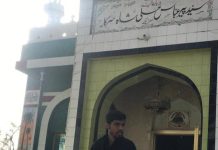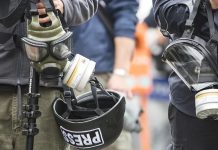Peshawar: Nearly 10,000 out of 27000 schools are without basic facilities in Khyber Pakhtunkhwa due to shortage of funds affecting thousands of students across the province.
According to the Khyber Pakhtunkhwa Annual Statistical Report of Government Schools, the total number of functional government schools in Khyber Pakhtunkhwa are 27261 in which 22044 primary (13579 male and 8456 female) and 5217 are secondary schools (3208 male and 2009 female).
The overall enrollment in government schools is 4.2 million with 3.02 million in primary and 1.17 million are enrolled in middle and secondary schools.
The total number of working teachers in these schools are 125265 (81344 male and 43921 female in which 70876 in primary schools, 15207 in middle, 28186 in high and 10996 are in government higher secondary schools.), according to the report.
Every school consisted of three basic things including a building, teaching and non-teaching staff and students. “It is the responsibility of government to provide other four basic facilities including clean water, toilet, electricity and boundary wall for safety to every school,” said the report.
The Khyber Pakhtunkhwa Independent Monitoring Unit which collects data for all key performance indicators for schools on monthly basis says nearly 30 percent schools have no electricity facility, 17 percent schools have no facility of water, 07 percent are without boundary walls while 8 percent have no toilet facility for both staff and students.
The Institute of Social and Policy Sciences comparison report 2016-17 says that in 2014-15, Rs94 billion were allocated for elementary and secondary education. This amount was increased by five percent during 2015-16, with allocation of Rs99 billion. The report says that with the increase of 5 percent, Rs 104 m were allocated to elementary and secondary education and Rs 8 billion were allocated to provision of missing facilities in schools.
However, education experts say that the allocated amount for provision of missing facilities was very low and Rs 8 billion cannot fulfill the need for facilities.
Talking to The New Lens Pakistan, a child right activist and education expert Imran Takkar said that education was on top priority of Pakistan Tehreek-e-Insaf government, however, Rs 8 billion allocated for provision of basic facilities is injustice.
He said that 30 percent schools across the province had no water facility, while around 10 percent were without toilets and 10 percent were without boundary walls. He said that basic facilities not only encouraged students but also their parents to enroll their children in government schools.
“I have seen several girls’ schools even in urban districts without toilet and water facilities which discourage female education in our province,” Takkar said.
The child right activist shared that around 2.5 million children are out of schools across the province which is alarming for government.
He said that in the Ormar Union Council three girls schools were lying closed from 2005 due to lack of teachers. The local member of provincial assembly had taken no action despite repeated complaints from residents, he said.
He suggested the government take tangible steps for providing basic facilities in schools and restore the old status of government schools across the province.
Sulaman Khan, a resident of Peshawar said that his two children enrolled in a government school came home to relieve themselves. “Education is not a priority for the government and the education department which is why people want their children to go private schools,” he said.
Pakistan Muslim League Nawaz (PML-N) member in the Khyber Pakhtunkhwa Assembly Amina Sardar criticized the PTI government for bringing little change in the education sector. She said the PTI government only made promises and claims when no improvement was seen in the last four years.
The opposition MPA said that several districts had no high schools for girls while majority of girls schools in rural districts were without basic facilities.
She said that in districts of Shangla, Kohistan, Frontier Region Bannu and Lakki Marwat education facilities for girls were thought to be high. “One of the main reasons behind low female education ratio in the province is lack of basic facilities in schools,” she said.
However, the KP Minister for Elementary and Secondary Education Muhammad Atif Khan told Truth Tracker/ New Lens Pakistan that Rs21 billion were allocated for provision of missing facilities in government schools.
The minister shared that from 2008 to 2013 under the ANP government, boundary walls for only 1369 schools were constructed. While the PTI government had constructed boundary walls for 13638 schools.
He said under the ANP government, water facilities were provided to 1987 schools. The PTI government had provided water facilities to 12198 schools so far.
He said that in last five years 16016 group latrines had been constructed while in the ANP years only 2065 latrine were constructed across the province schools.
The minister said that 12031 additional rooms had been constructed in schools while 9856 schools were provided electricity. He said that 5351 solar panels were distributed in rural schools where electricity facility was not available.
He said that the PTI government was working to remove all flaws from the education sector and all basic facilities would be provide to schools in the province.



